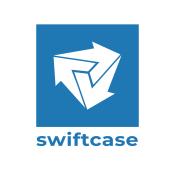Create a Task
The main application of SwiftCase is task management and automation. This section will cover the creation of a task from within SwiftCase. Please see the API documentation for creating a task via an external system.
There are a number of places within SwiftCase to create a task. You can use the sidebar:


You can use the button on the dashboard:


You can also create a task from a Case Summary page (more about that below).
You can even create a task from a Client Contact page:


Choose a Client/Client Contact
The first three options will present you with a screen to choose the Client and Client Contact you wish to assign to the Task.


You can choose an existing Client/Client Contact here or you can create a new one if necessary.
Once you have chosen your Client and Client Contact you will be presented with a dropdown menu of Workflows that are available to that Client. If you cannot see a particular workflow then please visit the Configure Workflows for Clients section of the user guides.
Choose a Workflow


Choosing one of the workflows and clicking Add Task will give you a preview of the first form on the first status (if one is present):


Create a Case
You can add multiples of workflows at this point, just choose from the dropdown and click Add Task. These will all be related tasks that have the same internal reference (e.g. 20-12345)and will be collected under the summary page for you to see. When creating a Task, you will be also creating a Case (from which SwiftCase derives its name!) in which the created Task can be one of multiple tasks that constitute a Case. Once created you will be presented with the following page:


Click View Task to see the page related to the Task you have created (or the last Task of the multiple Tasks you have created in a Case).
To see the overview of all Tasks that are part of a Case just click the Go to Summary button on any task page.


The example below shows a Case that has a meeting and an expense claim task associated with it.


So any search for that reference on the dashboard will return the tasks associated with the Case:


You can also add new Tasks to the Case from the Summary page using the Quick Actions panel:


This will present you with the default option of the current Client and Client Contact, but these can be changed if necessary. Please note that although they are in the same Case, none of the tasks created through the summary page will be a Child Task of another. To be a Child Task, this needs to be created from within another task (essentially through clicking a widget defined on the workflow).
Create a Child Task
Child Tasks are tasks that form part of a Parent Task. They can be created separately, but they are usually a sub task that needs to be completed to then move on in the Parent Task. You can configure child tasks by creating the child workflow first, and then adding the child workflow as a Child Task Widget in the parent workflow (link to Task Widgets section).
Child Tasks will share the same reference as the parent, and when created will pull through the answers to questions from the parent task if the questions are also present in the child workflow.
When building the child workflow, you can opt to have the child task have separate answers in the database (so these can be altered to be specific to the task) or you can opt to have the child task share the answers with the parent task. This would mean that changing answers to the questions shared between the parent and child would update both (regardless of which task you change the answer on). For instance: if you share the Client Address question on both workflows you would only have to update the address on one of the tasks for it to update both. By default SwiftCase will treat both tasks as separate database entities.
SwiftCase is proudly powered by WordPress
